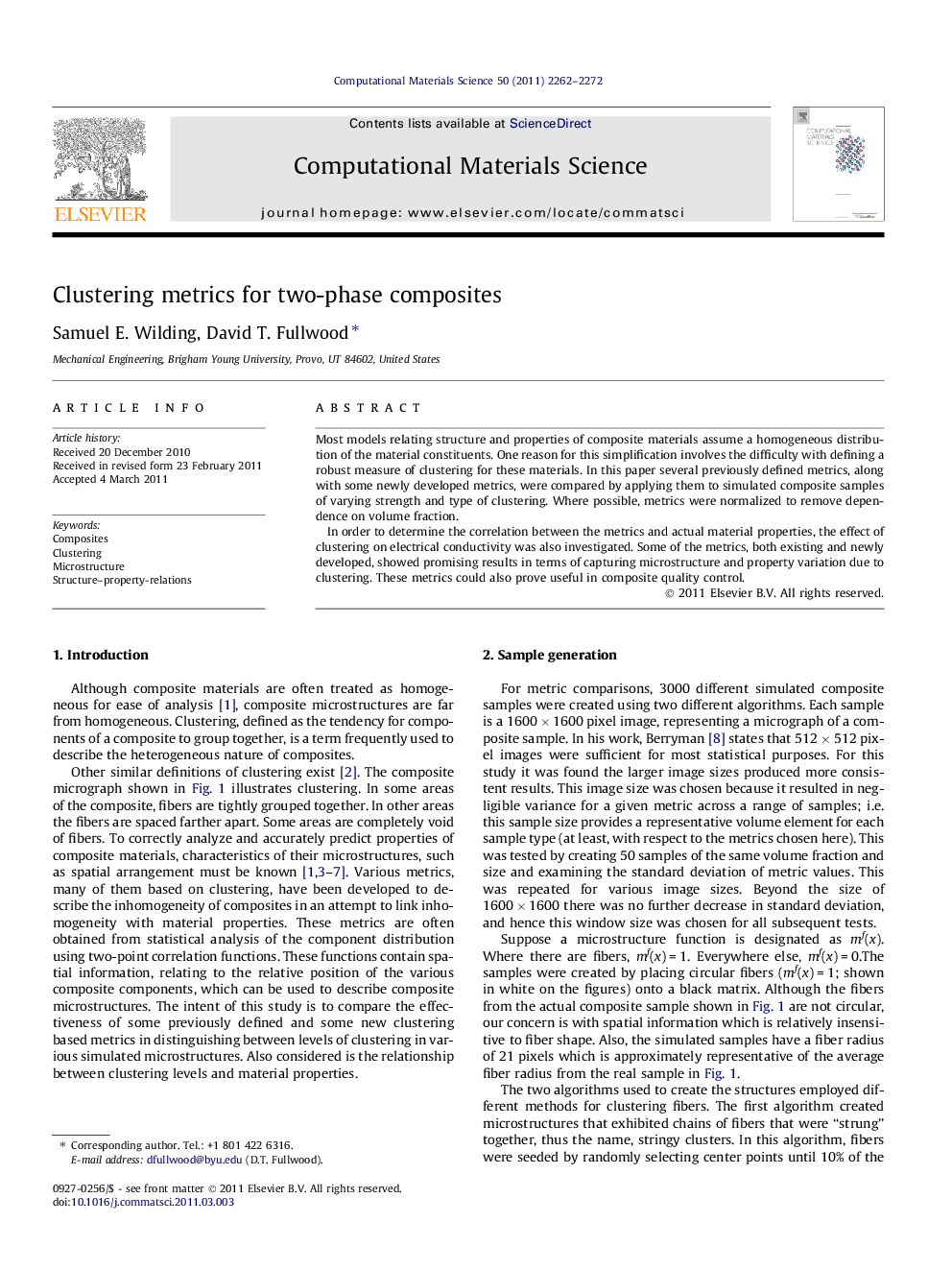| Article ID | Journal | Published Year | Pages | File Type |
|---|---|---|---|---|
| 1562491 | Computational Materials Science | 2011 | 11 Pages |
Most models relating structure and properties of composite materials assume a homogeneous distribution of the material constituents. One reason for this simplification involves the difficulty with defining a robust measure of clustering for these materials. In this paper several previously defined metrics, along with some newly developed metrics, were compared by applying them to simulated composite samples of varying strength and type of clustering. Where possible, metrics were normalized to remove dependence on volume fraction.In order to determine the correlation between the metrics and actual material properties, the effect of clustering on electrical conductivity was also investigated. Some of the metrics, both existing and newly developed, showed promising results in terms of capturing microstructure and property variation due to clustering. These metrics could also prove useful in composite quality control.
► Clustering metrics for composites are analyzed. ► Two new clustering metrics are introduced. ► The metrics are applied to a variety of simulated structures. ► Correlations between the metrics and material properties are assessed. ► Recommendations are made for choosing the most effective clustering metrics.
